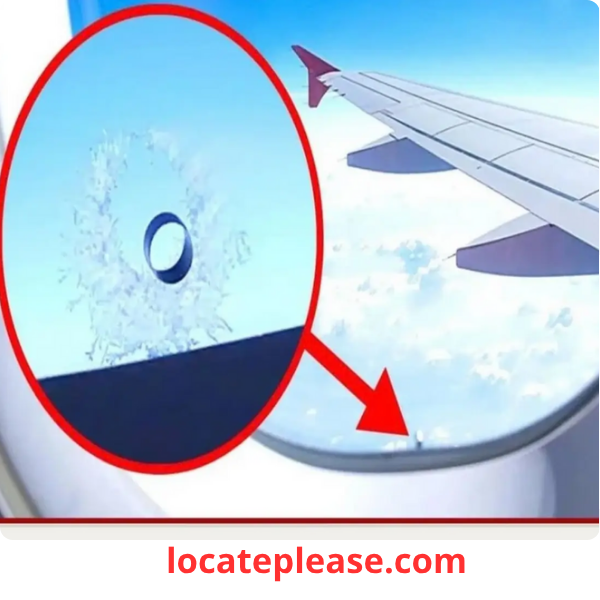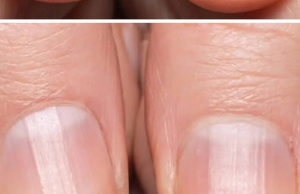If you’ve ever sat by a window on a commercial flight, you’ve likely noticed it:
A tiny hole — about the size of a pinprick — near the bottom of the window, quietly doing its job while most passengers fly unaware of its importance.
At first glance, a hole in an airplane window might seem alarming.
After all, at 35,000 feet, the outside air pressure is less than a quarter of what it is at sea level.
So why would engineers intentionally drill a hole into something so critical?
The truth is, this small hole isn’t a flaw — it’s a brilliant piece of aerospace engineering.
And its purpose is both vital and life-saving.
Meet the “Breather Hole” — A Lifesaver in Plain Sight
Officially known as a bleed hole or breather hole, this tiny opening is located in the middle pane of the airplane window — not the outer or inner layer.
To understand why it’s there, you need to know how airplane windows are built.
The 3-Layer Design of an Airplane Window
Modern aircraft windows are not single panes of glass — they’re a triple-layered safety system:
- Outer Pane
- The thickest and strongest layer
- Bears the full pressure difference between the cabin and the outside atmosphere
- Directly exposed to wind, cold, and debris
- Middle Pane (with the hole)
- Also made of acrylic, nearly as strong as the outer pane
- Contains the breather hole
- Acts as a backup pressure barrier if the outer pane fails
- Inner Pane (Scratch Pane)
- The thin, innermost layer you can touch
- Made of acrylic
- Its only job: protect the middle and outer panes from scratches, smudges, and passenger contact
✈️ Fun fact: The inner pane doesn’t contribute to pressure resistance — it’s there for protection only.
So, What Does the Small Hole Actually Do?
The breather hole has two critical functions — both essential for safety and comfort.
✅ 1. Balances Pressure Between Panes
As the plane climbs, cabin pressure is carefully regulated to keep passengers comfortable — typically equivalent to about 6,000–8,000 feet above sea level.
But the outside pressure drops dramatically — creating a huge pressure difference across the window.
The breather hole allows cabin air to slowly flow into the gap between the outer and middle panes.
This ensures that:
- The full pressure load is applied only to the outer pane
- The middle pane experiences much less stress
🔧 Think of it like a pressure release valve — it protects the backup layer.
In the extremely rare event that the outer pane cracks or fails, the middle pane is already pressurized and ready to take over — keeping the cabin sealed and safe.
✅ 2. Prevents Fogging and Frost
Another crucial job of the breather hole: moisture control.
At high altitudes, outside temperatures can plunge to -57°C (-70°F).
When warm, humid cabin air meets the cold window, condensation forms — which could fog up the entire window and block your view.
The breather hole helps by:
- Allowing air to circulate between the panes
- Reducing moisture buildup
- Preventing frost and fog from forming between the layers
That’s why, even in icy clouds, you can still see the stars, the sunrise, or the world below — clearly.
🌫️ You might notice a thin line of frost near the hole — that’s normal and proof the system is working.
Expert Insight: Why This Tiny Hole Is a Big Deal
Marlowe Moncur, Chief Technology Officer at GKN Aerospace, explains:
“The purpose of the small breather hole in the middle pane is to balance the pressure between the cabin and the gap between the acrylic panes, so that the cabin pressure only acts on the outermost pane.”
Bret Jensen, a senior aviation technician at Boeing, adds:
“This little hole also helps prevent moisture and frost from building up on the window. That’s why your window doesn’t fog up completely when the plane flies through clouds.”
Is It Safe? What If the Outer Pane Breaks?
While it’s extremely rare, if the outer pane cracks, the middle pane — thanks to the breather hole’s design — is already equipped to handle the pressure.
The cabin’s pressurization system will maintain safe conditions, and pilots are trained to descend safely if needed.
Passengers are never in danger — the window system is built with multiple redundancies.
Final Thoughts: A Tiny Hole with a Massive Mission
That small hole in your airplane window may seem insignificant — but it’s a masterpiece of engineering.
It quietly:
- Protects the structural integrity of the aircraft
- Prevents fog and frost
- Safeguards passengers with smart, layered design
So the next time you gaze out at the clouds from your window seat…
Take a moment to appreciate that tiny pinprick of genius.
Because in aviation — as in life —
👉 The smallest details often make the biggest difference.
Safe skies, clear views, and brilliant design — all thanks to a hole no bigger than a needle.










